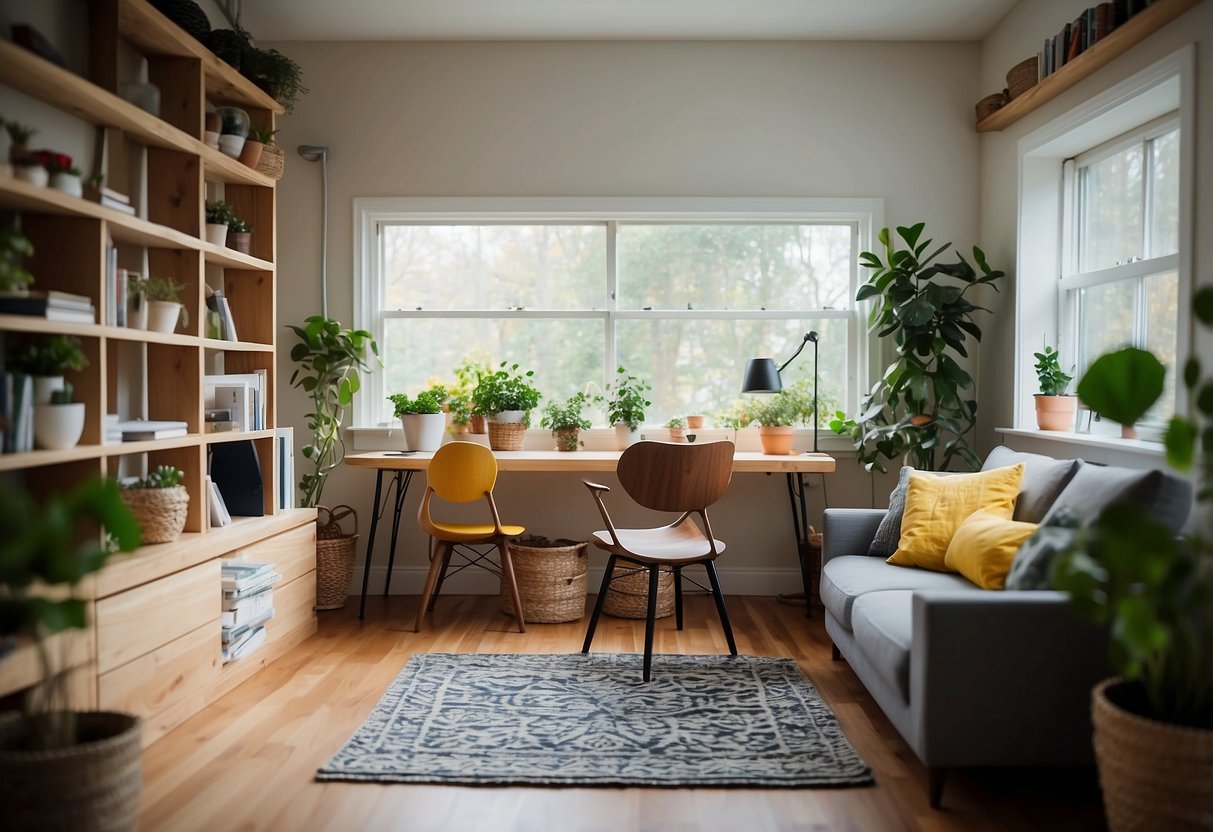
8. Install a Ceiling Fan
Installing a ceiling fan can be a straightforward project with significant benefits. First, make sure to gather all necessary tools, including a screwdriver, ladder, and wire stripper. Safety first: turn off the power at the circuit breaker to prevent any electrical accidents.
Begin by removing the existing light fixture, if there is one. Follow the instructions provided with your ceiling fan kit for mounting the bracket. It’s critical to ensure the bracket is securely attached to a ceiling joist.
Next, assemble the fan according to the manufacturer’s directions. Most modern fans come with easy-to-follow instructions. Attach the fan’s downrod to the motor housing, if applicable. Lift the fan and hang it on the mounting bracket.
Once the fan is securely in place, connect the wiring. Typically, the wiring involves matching the color-coded wires from the ceiling fan to those in the ceiling. Twist the wires together and screw on wire nuts for a safe connection. Carefully tuck the wires into the junction box.
Finally, secure the fan canopy to the bracket, covering the wiring. Attach the fan blades and any light fixtures, if included. Ensure everything is tight and properly balanced. Turn the power back on and test the fan to make sure it operates correctly in all speeds and directions.
By installing a ceiling fan, you can enhance comfort and potentially reduce energy costs. This project requires basic electrical knowledge and attention to safety, but it can be accomplished with patience and care.
9. Add Crown Molding
Adding crown molding is a simple yet effective way to enhance the elegance of a room. Crown molding bridges the gap between walls and the ceiling, providing a decorative touch that can significantly elevate a space’s appearance.
To start, measure the perimeter of the room to determine the amount of molding needed. This ensures accuracy and minimizes material waste.
Once measurements are taken, choose the style and material of the crown molding. Options range from wood to polystyrene, each offering different aesthetic and installation benefits.
Cutting the molding pieces at the correct angles is crucial for a clean fit. A miter saw is typically used for this task, allowing precise cuts to match the room’s corners.
After cutting, it’s time to attach the molding to the walls. Nails or adhesive can be used depending on the type of molding and wall material.
To finish, apply caulk to fill any gaps between the molding and walls. This step ensures a seamless look and prepares the molding for painting.
Painting or staining the molding can either blend it with the existing wall color or create a contrasting highlight. This final touch personalizes the project and completes the improvement.
10. Create a Chalkboard Wall
A chalkboard wall is a fun and functional addition to any home. It offers a versatile space for notes, lists, and artistic expressions.
Start by selecting the ideal wall. Ensure the surface is smooth and clean. Use painter’s tape to outline the area you want to turn into a chalkboard.
Purchase chalkboard paint from a hardware store. Apply the paint using a roller for even coverage. It usually requires two to three coats. Allow each coat to dry completely before applying the next one.
After the final coat, let the wall cure for a few days. This ensures the paint sets properly and becomes durable.
To condition the chalkboard, rub a piece of chalk over the entire surface and wipe it off. This helps to prevent ghosting. Decorate the wall with colorful chalks and enjoy the new addition to your home.